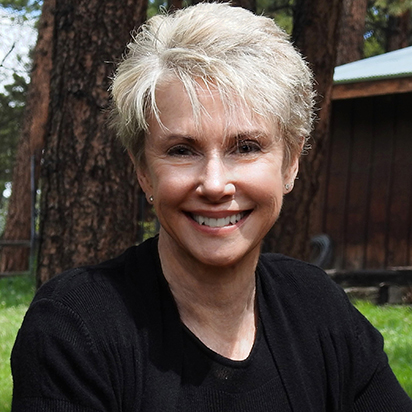Our recent series of blog topics have focused on that extremely important juncture a company hits when they get to about 20 people. Whatever secret sauce they started with has been successful enough to get them traction in the market, but can they grow from here? What we find is that it is critical to change gears at this point and focus some energy on the professionalization of key components of the company going forward. The things that got you from 1 to 20 don’t scale. Many founders miss that point because they’ve proven successful so far. Why not further?
The dynamics start changing around 20 people. The honeymoon phase is over. Customers begin to expect the same quality but bigger. The things that attract new employees are different than they were that first day. The evolution and maturation of leadership and strategic perspectives and style are critical at this stage.
I’ve asked Kate Ripp, a proven advisor I have worked with in the past, to share some thoughts on this most exciting time of a company’s growth. Kate and I have spoken many times about this inflection point. Not only is it her favorite stage of a company but also the one where founders can get the most impact from outside experts. You have a very short window to grow some new and possibly uncomfortable muscles quickly.
Jay: Companies that have successfully navigated that startup phase have so many inflection points ahead of them. They tend to be very flat organizationally, with the founders wearing many of the hats. One of the most exciting and challenging turning points in my experience is that phase where flat just doesn’t cut it and you need some additional structure and leadership to continue your growth. Kate, how does a founder know when they have hit that point? How should they anticipate that coming change?
Kate: Yes, those inflection points surprise entrepreneurs as growth confronts them with new challenges for which they are ill-equipped.
With 1-19 employees a business is in the start-up or ramp-up phase. Many companies remain successful small businesses indefinitely. Once you add that 20th employee, you will be confronted with extreme change. Fasten your seatbelt – you have just come through a Wind Tunnel. A Wind Tunnel requires you to let go of methodologies that no longer work and acquire new ones that do.
20-50 employees may be the most treacherous stages of growth to navigate and have the ability to create all kinds of growth trauma. It’s all about transitioning the organization from CEO-centric to Enterprise-centric. The organization is now built around your team. You have to learn how to manage the big picture.
Jay: What are some common challenges you see that a founder should be aware of during this big change?
Kate: Your primary goal is to undergo a major transformation from being an entrepreneur to becoming an operational manager (or overseeing an operational manager).
You’re likely experiencing some of the following:
- You have 3-5 managers. Your team is trying to gain more autonomy to assert their own expertise. They might be pushing back or threatening to rebel.
- You are probably experiencing the pain of not wanting to let go of employees who no longer fit because the company has outgrown them. And a large percentage have become disengaged employees who are just hanging out, causing all kinds of problems.
- There is a lot of confusion due to (a) lack of company-wide clarity on who is responsible for what; (b) who has authority for what and (c) tension in the air as you and the organization are being stretched.
- Routines and systems are still evolving and in flux, so you have resource challenges.
- You’re trying to keep your arms around the business while letting go of more responsibilities.
- Cash is tight as working capital needs grow from increased sales volume (A/R, Inventory increases) and payroll.

Jay: Can you talk a bit about some of your favorite best practices and tools we can use to help us navigate this better?
Kate: Recognizing the new challenges and knowing how to address those challenges is your top priority. In order for the organization to successfully grow, you must “let it go to let it grow.” The organization will become larger than who you are. This means investing in specialists and managers to grow your company.
Your focus must be on people as you witness your company moving way beyond your control. Your best approach is to learn the art of delegation so you can manage the big picture and effectively delegate responsibilities and authority to others. You’re in the process of downloading your knowledge so it becomes part of your team’s collective intelligence.
You have to start trusting, believing, managing, training, teaching, coaching, rewarding, caring, and communicating with each person in your company. This is a very difficult transformation for most CEO’s/Founders and many don’t make it.
The strategic and leadership perspective has to be on creating a “fully engaged team that is ready to win.”
Success comes from changing your approach and communicating regularly at a high level. You’ve brought on capable people who need to be heard. Further, establishing, testing, and implementing your top processes are essential.
Jay: Clearly every company and circumstance is different but I imagine there are still some absolute “must” considerations you’ve found in your experience. Can you share a couple with us?
Kate: Jay, there are so many “must” considerations at the stage, a couple won’t cut it! lol But let me share the key considerations:
- Clearly define and articulate the company’s vision.
- Develop clear roles and responsibilities for each team member with accountability measures to focus on key performance indicators that support company goals.
- Challenge all previous assumptions about your business model. It can be improved.
- Clearly define and articulate the company’s values and integrate them into all aspects of the business. Discuss goals and challenges often with employees. Explain how the company is managing its growth.
- Recognize that methodologies that worked when you were smaller, no longer work. Leadership must discover new tools and methodologies to address the challenges of the company.
Jay: Any other thoughts on this stage of the company?
Kate: This stage of growth asks a lot of the CEO. If you don’t understand who you need to become, your growth will come to a screeching halt. Why? Because the business can no longer successfully grow using the same approaches that worked before. Remember the wind tunnel? The business must be re-tooled for the level of complexity you have reached. Your best defense is a sound offense.
Jay: I know business owners are often great problem solvers and with the right information and advice can navigate these steps in growth. However, I know from personal experience that getting an outside third-party facilitator and mentor can really ratchet up that effort. You’ve helped a bunch of companies as that type of facilitator. Can you talk a little about that dynamic and how that unbiased view can make a significant difference in both the quality and speed of that personal and corporate development?
Kate: What I have found in working with business owners is that it’s not only about what they know and figured out along the way. It’s about drilling down to the root cause of issues, those “hidden agents” that are invisible to owners and create obstacles to growth. You don’t know what you don’t know. My message is “you don’t have to figure it out as you go”. There is a proven formula to navigate the challenges of growth. As a facilitator and growth coach, I give them headlights into their future, drill down to the hidden obstacles, and guide owners and their leadership team to eliminate them.
Thanks, Kate, for adding some important food for thought. It’s useful to get a second, outside viewpoint, on this key time in a company’s life. As much as I enjoy having that view added to my blog series, it’s even more valuable to have that voice if you’re a founder going through this exciting but hard stage.
More about Kate Ripp:

Before founding her coaching and consulting practice, Mission Critical Teams, in 2000, Kate Ripp spent more than 20 years in management and leadership roles. While in these roles, she focused on forming and forging cross-functional teams related to business development, training, and large-scale account management and maintained a strong focus on executing initiatives as well as developing managers and leaders. Kate now works primarily with leaders and teams of small to mid-size businesses (typically 100 employees or less) who have a desire to improve their contribution to their organization. She pulls from her own experience and results-driven methodologies to develop internal alignment and action plans designed to enhance performance and bottom lines. To learn how a proven formula building a healthy, sustainable organization, contact Kate at [email protected] or connect with her on LinkedIn.


